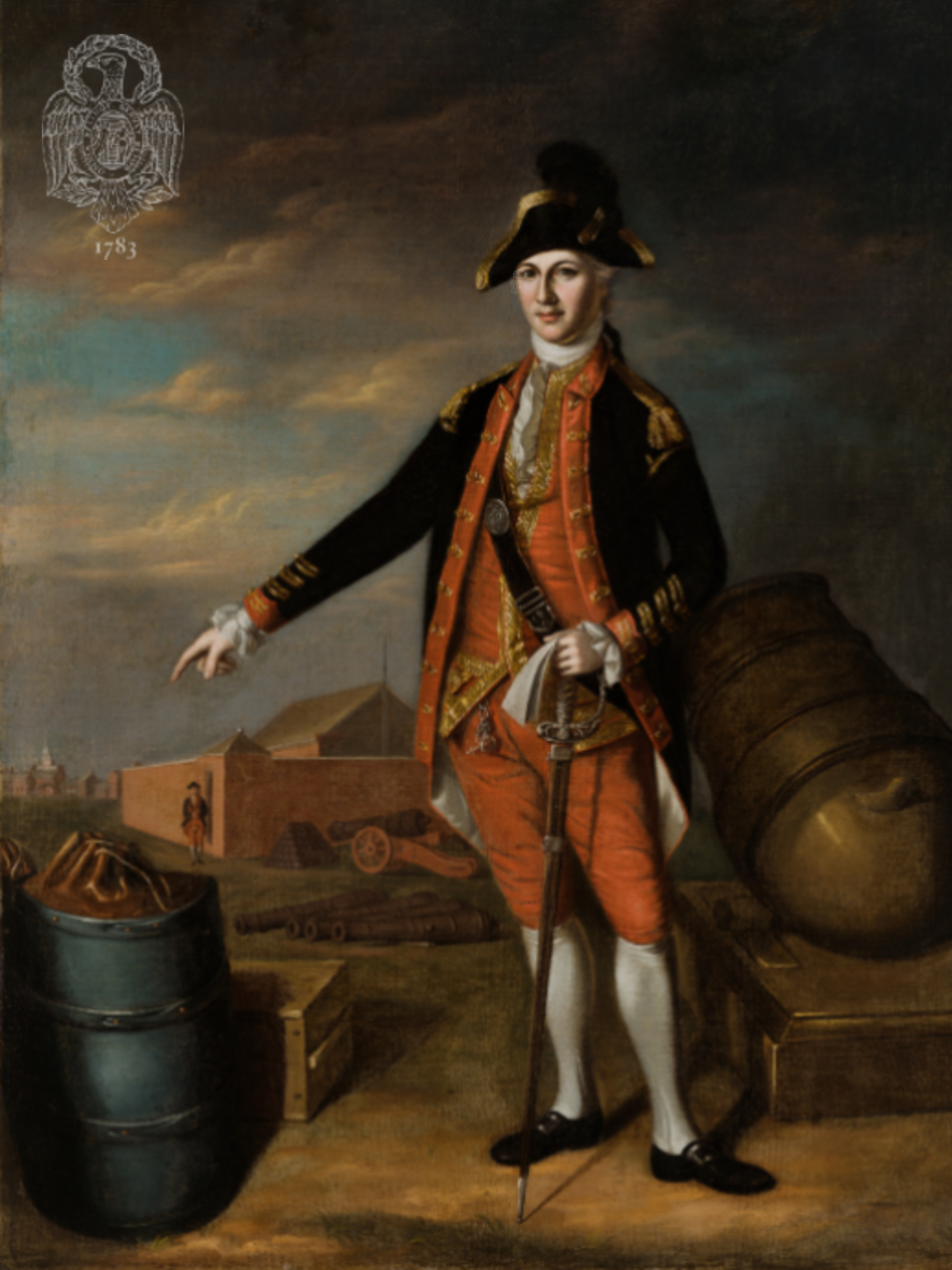Col. Benjamin Flower

Benjamin Flower died in service in 1781, possibly of a lung ailment he contracted at Valley Forge. A hatter by trade, Flower had been asked by General George Washington to assemble a company of Artillery Artificers whose job it was to build cannons.
Flower and his family have a close connection to two of the major national symbols, the Liberty Bell and the Star Spangled Banner.
The painting of Flower depicts him standing at the ordinance depot at Franklin Square in Philadelphia, his arm extended pointing at the building now known as Independence Hall. This commemorates Flower’s efforts at saving the Liberty Bell. As the British Army closed in to capture Philadelphia in 1777, Flower and his company were ordered to save many of the bells in the city to prevent the British from melting them down. Flower and his men succeeded in moving the Liberty Bell to Allentown, where it was hidden.
After Flower’s death, the painting ended up in the possession of his sister, Rebecca Flower Young, and her daughter, Mary Young Pickersgill, who both worked as flag-makers in Baltimore during the War of 1812. Pickersgill is credited with sewing the Star Spangled Banner that withstood the bombardment of Fort McHenry and inspired Francis Scott Key to write the words to the national anthem.
The painting of Col. Flower is currently on loan from the Star Spangled Banner Flag House Flaghouse Museum to the Museum of the American Revolution in Philadelphia.
Because he died in service, Col. Flower’s descendents, and those of his siblings, are eligible to join the Society of the Cincinnati.
